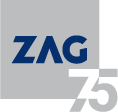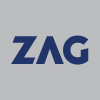
In order to be able to predict the long-term behaviour of metals in cementitious materials involved in radioactive waste disposal, a phenomenological model is required, taking into account formation of thicker corrosion layer, transport of products from the steel surface, studying behaviour of the matrix and special characteristics of corrosion process.
The overall aim of the project is to propose and evaluate a phenomenological model to the whole propagation process of carbonation-induced corrosion of metals in different cementitious materials, used in the context of NPP operation and waste containers formulation. Identified lacking or inconsistent information will be obtained through experimental program, encompassing microstructural, physical and micromechanical analysis of different phases of corrosion process. The experimental programme is based on both (long-term) characterisation on old concrete structures, and on (short-term) laboratory experiments on concrete with different chemistry and microstructure exposed to accelerated degradation.
CEA team has developed a comprehensive model that incorporates all interconnected and consequential phases of steel corrosion processes in concrete. On the other hand, ZAG team has upgraded specific corrosion monitoring techniques that enable to measure very low corrosion rates in shorter time intervals. It is believed, that combination of these two approaches and methods will help to upgrade and evaluate the corrosion model.

